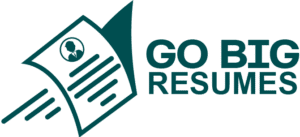Resume or CV?
Understanding the Importance of Cover Letters
In the realm of job applications, the cover letter stands as the first impression you make on potential employers. It acts as a personalized narrative that complements your resume (or CV), providing context and illuminating your suitability for the role. Many candidates overlook the power of a well-crafted cover letter and rely solely on their CV, but in reality, a good cover letter can significantly increase your chances of landing an interview.
Definition and Purpose of a Cover Letter
A cover letter is a formal document sent along with your resume, designed to introduce yourself and explain why you’re the best fit for the position. It provides an opportunity to showcase your personality, highlight key achievements, and demonstrate your understanding of the company and role.
The primary purpose of a cover letter is to persuade hiring managers to review your application in detail. It acts as a bridge between your background and the company’s needs, allowing you to tailor your message specifically to the position you’re targeting. Unlike a CV, which lists your skills and experiences objectively, the cover letter allows you to tell a compelling story about your career journey and aspirations.
The Role of a Cover Letter in Job Applications
Many employers use the cover letter as a screening tool. A strong letter can set you apart from dozens or even hundreds of applicants. It shows effort, professionalism, and genuine interest. When properly aligned with the cover letter for job application, it emphasizes how your unique skills meet the company’s requirements.
Additionally, a cover letter helps address gaps or concerns in your employment history, demonstrate cultural fit, and elaborate on specific achievements that resonate with the company’s mission or values. For instance, if you’re applying for a cover letter for teaching job, you might highlight your passion for education and your innovative teaching methods.

Common Misconceptions About Cover Letters
Despite their importance, many job seekers undervalue the cover letter or treat it as optional. Some believe that recruiters don’t read them, leading to minimal effort in crafting one. Others think a generic, copy-pasted letter suffices, which undermines its effectiveness.
Another misconception is that a cover letter should merely restate what’s in your CV. In fact, a well-written cover letter should complement your resume by offering insights into your personality, motivation, and how you can contribute to the organization. Furthermore, some candidates confuse the cover letter meaning in Urdu or other languages, assuming it’s just formality rather than a strategic tool.
How a Cover Letter Complements Your CV
Your CV provides a structured overview of your qualifications, work experience, and skills. However, it often lacks a personal touch or explanation of your motivations. This is where the cover letter enhances your application by adding context and storytelling elements.
For example, when applying with a cover letter sample for job application in Word format, you can directly address how your background aligns with the company’s goals. The cover letter format allows you to customize your message, making it more relevant and engaging. By connecting the dots between your experiences and the company’s needs, the cover letter creates a narrative that makes your CV more impactful.
Essential Elements of a Cover Letter
Designing an effective cover letter requires understanding its fundamental structure and components. It’s not about filling space but rather about delivering concise, targeted information that captures attention.
Structure and Format of a Cover Letter
The cover letter format should adhere to professional standards, typically consisting of three to four paragraphs. Use a clear font like Arial or Times New Roman, size 10-12, and maintain consistent margins for readability.
Start with a header containing your contact information and the recipient’s details. The salutation should be addressed personally, if possible, using the hiring manager’s name. Follow with a compelling opening paragraph, body paragraphs highlighting your qualifications, and a closing paragraph urging action.
Consistency and clarity are vital. The cover letter for CV must be cleanly formatted, free of errors, and aligned with the tone of the company culture formal for corporate roles, slightly informal for startups, or creative for design positions.
Key Components to Include
An effective cover letter includes several critical sections:
- Introduction: Clearly state the role you’re applying for and where you found the vacancy.
- Body: Highlight your relevant skills, experiences, accomplishments, and explaining how they match the job requirements.
- Personalization: Mention specifics about the company, demonstrating your genuine interest and knowledge.
- Closing: Summarize your enthusiasm, thank the employer for their time, and suggest a follow-up or interview.
Including keywords from the cover letter for job description ensures your application gets noticed by applicant tracking systems. Focus on quantifiable achievements, such as increases in sales or successful projects, to make your cover letter sample compelling.
The Importance of Personalization
A generic cover letter template won’t stand out. Employers value candidates who take the time to customize their cover letter for each application. Personalization involves addressing specific challenges faced by the company and illustrating how your skills can solve them.
For example, a cover letter for teaching job must reflect your educational philosophy, classroom management skills, and dedication to student development. Tailoring your cover letter format to emphasize relevant experiences shows sincerity and professionalism.
Tailoring Your Cover Letter for Different Industries
Different industries have unique expectations regarding cover letter content and style. Creative roles like graphic design or marketing may expect more innovative formats, while finance or law require formal, straightforward letters.
Understanding these nuances helps craft cover letter examples that resonate with industry standards. For instance, a cover letter for teaching job should include pedagogical strategies and success stories, whereas a cover letter for job in IT might emphasize technical expertise and problem-solving skills.
Crafting an Effective Cover Letter
Writing a cover letter isn’t just about listing qualifications; it’s about storytelling, persuasion, and establishing a connection. Strategic crafting can turn a bland application into an irresistible invitation for an interview.
Strategies for Writing a Compelling Introduction
Your introduction sets the tone and captures interest immediately. Start with a hook such as mentioning a mutual connection, a recent achievement of the company, or your passion for the field. Be precise about the role you’re applying for and how you discovered the vacancy.
A powerful cover letter sample begins with a sentence that excites curiosity or demonstrates your enthusiasm. For example, “With over five years of experience in digital marketing and a passion for innovative campaigns, I am excited to apply for the Digital Marketing Specialist position at XYZ Company.”
Avoid vague openings like “I am writing to express my interest,” instead, aim for dynamic and engaging statements that distinguish you from other applicants.
Showcasing Relevant Skills and Experiences
The core of your cover letter lies in effectively showcasing your pertinent skills. Carefully analyze the cover letter examples provided by industry leaders, noting how they emphasize achievements.
Use the cover letter format to highlight specific instances where you’ve succeeded — whether through increased sales, successful projects, leadership roles, or innovative approaches. Incorporate data-driven results, such as “Led a team that increased annual revenue by 20%,” to substantiate your claims.
This section should be tailored precisely to align with the job description, emphasizing transferable skills and relevant experiences. Avoid generic statements; instead, focus on concrete examples that demonstrate your capabilities.

Demonstrating Enthusiasm for the Position
Employers seek candidates who are genuinely interested in their organization. Your cover letter should reflect enthusiasm and a clear understanding of the company’s mission and culture.
Research the company beforehand and mention specific initiatives, values, or projects that inspire you. Explain how your personal values or career goals align with theirs. For a cover letter for teaching job, this might involve discussing your commitment to fostering inclusive classrooms or innovative teaching methodologies.
Expressing passion not only shows motivation but also indicates long-term interest, which is highly valued by recruiters. Authenticity is crucial avoid overly generic or exaggerated claims.
Writing a Strong Conclusion and Call to Action
A compelling cover letter ends with a confident closing paragraph. Restate your interest, summarize why you are a perfect fit, and invite further communication.
Include a polite call to action, such as a request for an interview or a meeting. For example, “I look forward to discussing how my experience and skills can contribute to your team. Thank you for considering my application.”
Make sure your contact information is clear and accessible. Conclude with a professional sign-off, such as “Sincerely” or “Best regards,” followed by your name.
Cover Letter Examples and Templates
To streamline your application process, numerous cover letter templates and examples are available online. These resources serve as valuable starting points but should always be customized to reflect your unique profile and the specific role.
Free Cover Letter Template Options
Many websites offer cover letter template free downloads in various formats, including Word and PDF. They provide a structured layout that adheres to professional standards, saving time and ensuring consistency.
Templates often include placeholders for your contact details, the company’s information, and the body content. While convenient, remember to personalize each template thoroughly so it resonates authentically with the employer.
Sample Cover Letters for Various Positions
Examples help illustrate how to tailor your message effectively. For instance, a cover letter sample for job application in word format might showcase a professional background in sales, emphasizing measurable achievements. Conversely, a cover letter for teaching job would focus on educational philosophy and classroom success stories.
Review multiple cover letter examples within your industry to identify key phrases, tone, and structure. Use these samples as inspiration but avoid copying verbatim, as personalized content is more impactful.
Analyzing Successful Cover Letter Formats
Effective cover letter format involves balanced paragraphs, logical flow, and visual clarity. Analyzing successful examples reveals common traits:
- Clear and concise language
- Use of bullet points to highlight achievements
- Specific references to the company’s projects or values
- Strong opening and closing statements
Adopting these practices enhances your cover letter’s readability and persuasive power.
Writing a Cover Letter for a Job Application
A generic cover letter for job application should be crafted carefully to address the specific role. Focus on aligning your skills with the job requirements, using keywords from the description.
Highlight relevant accomplishments, demonstrate enthusiasm, and ensure the tone matches the company’s culture. Always personalize your cover letter for each application to maximize relevance and impact.
Conclusion
The cover letter is an indispensable element of a successful job application, serving as your personal introduction and a platform to showcase your unique value proposition. By understanding its purpose, mastering its structure, and customizing it to fit each specific role and industry, you can significantly improve your chances of securing interviews. Utilizing templates and learning from real world cover letter examples can help streamline your efforts, but authenticity and rationalization remain key. Whether applying for a cover letter for teaching job, drafting a cover letter sample, or exploring cover letter format, investing time in crafting a compelling letter will pay dividends in your career journey. Remember, a well written cover letter not only opens doors but also establishes a lasting positive impression with potential employers.

FAQS
A cover letter is a one-page document you submit with your resume when applying for a job. The purpose of a cover letter is to summarize your qualifications, express your interest in the job and organization, and convince the hiring manager to review your resume.
A cover letter usually includes your contact information, a salutation to the hiring manager (if known), an introductory paragraph offering a brief introduction to you and the position you want to apply for, a body paragraph in which you elaborate on your relevant skills and experience, and a closing paragraph in which you express your interest and include a call to action.
It's recommended your cover letter be no more than one page, ideally just a few paragraphs (2-4). Realistically, a shorter, more focused cover letter demonstrates respect for the reader's time and provides opportunity for you to present the best and most compelling info you are able.
To make your cover letter pop, tailor it for each job you apply to and make it clear you have researched the organization and job. Showcase your most relevant skills and experience and include numbers on your accomplishments whenever possible. Include YOUR personality with your strong connections to the role and the organization.
If you don't know the hiring manager's name, it is usually okay to use a generic salutation such as "Dear Hiring Manager" or "To Whom It May Concern". Ideally, however; if you can find the name of the hiring manager, you want to use their name so you demonstrate that you did some research.
Services
Subscribe to our newsletter
© 2025 Go Big Resumes powered by inceptasquare.com



